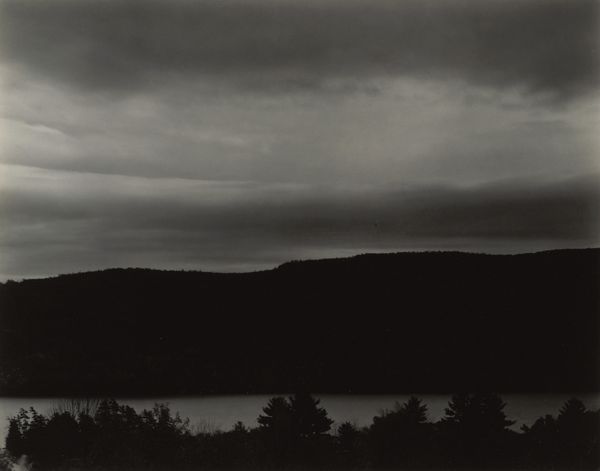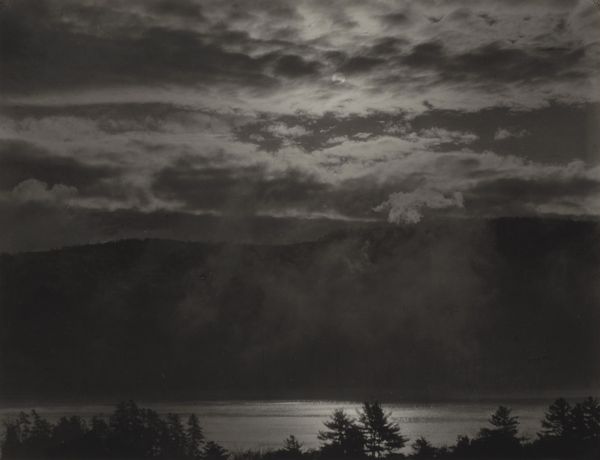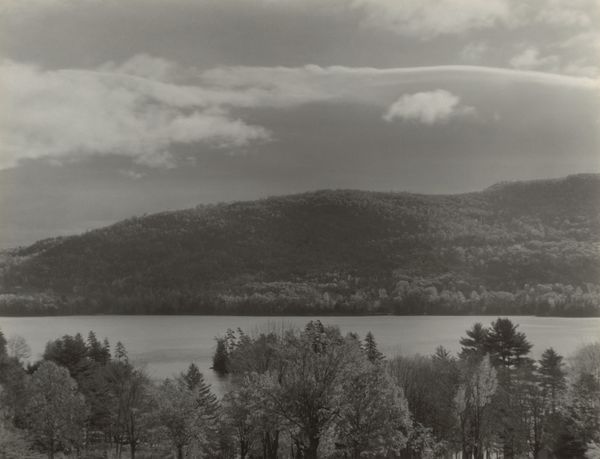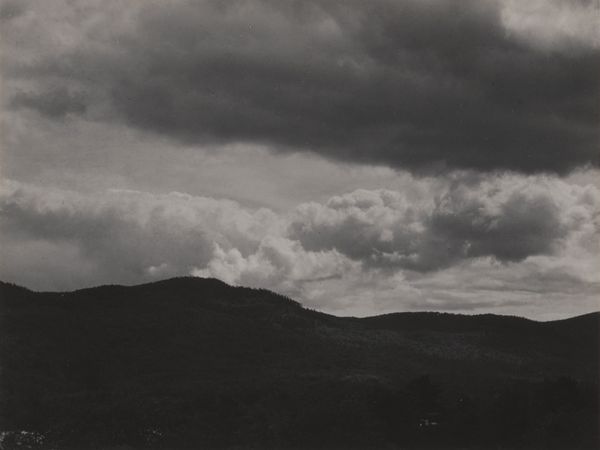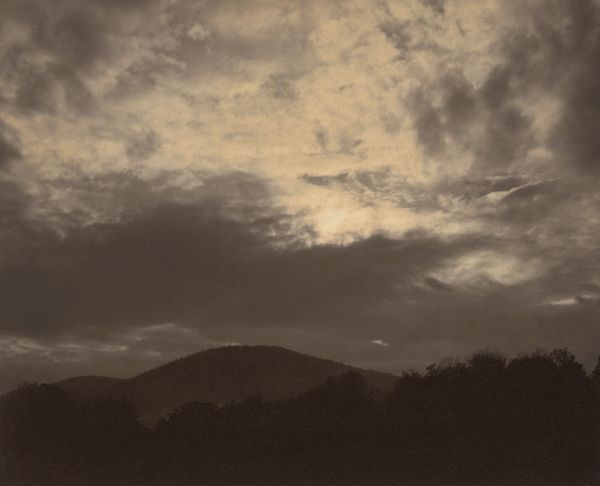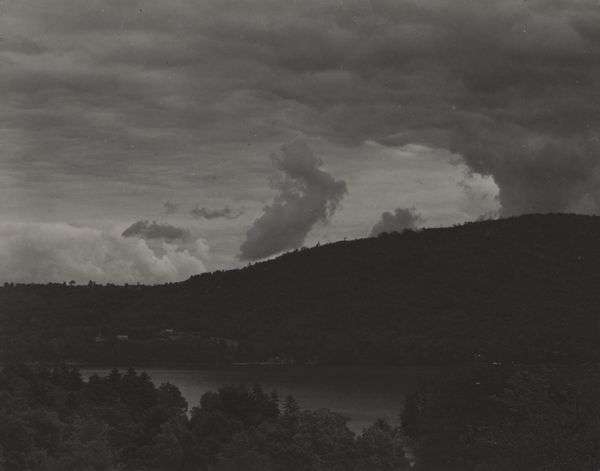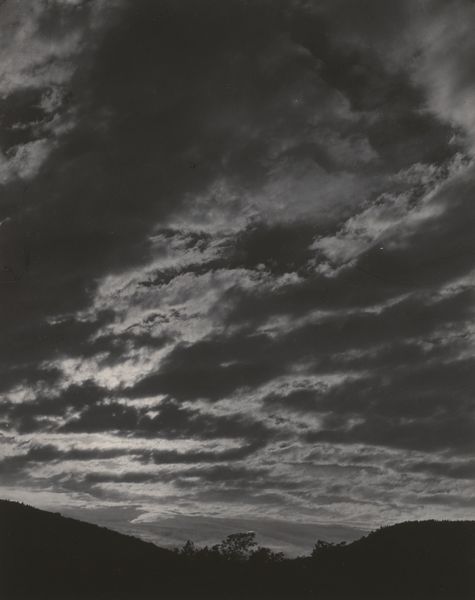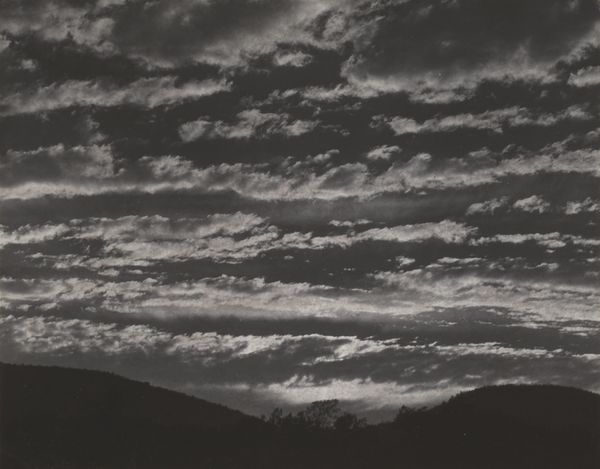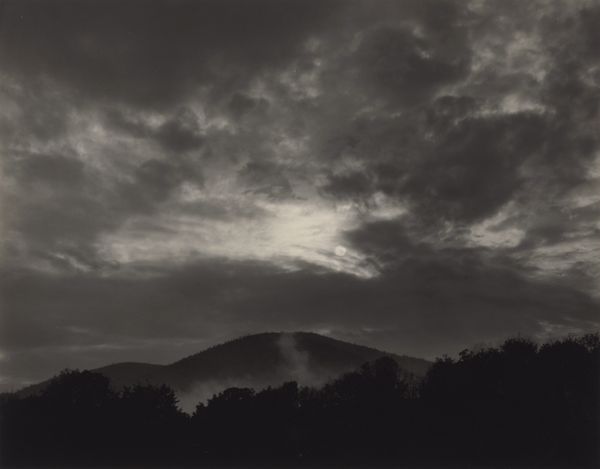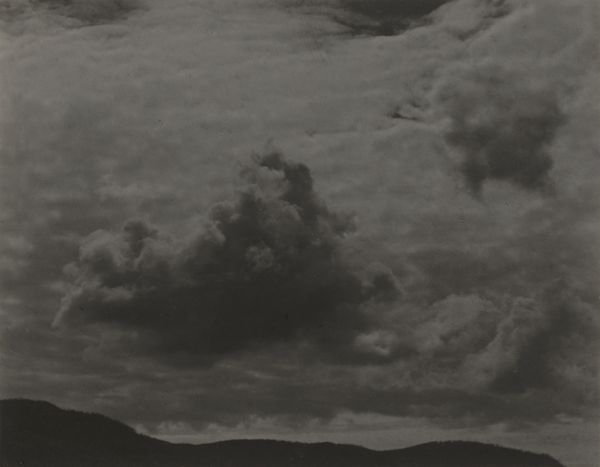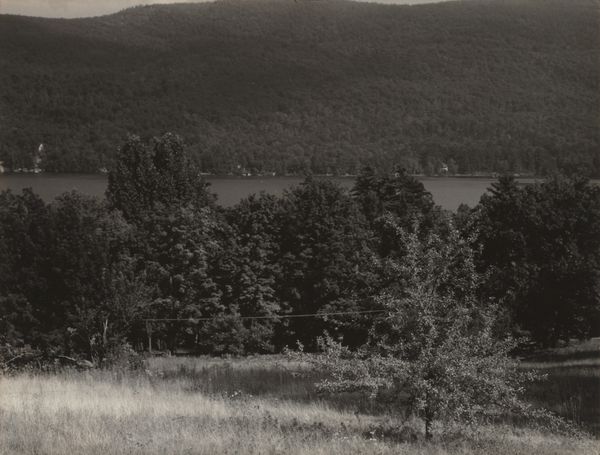
photography, gelatin-silver-print
#
cloudy
#
black and white photography
#
snowscape
#
pictorialism
#
landscape
#
eerie mood
#
photography
#
low atmospheric-weather contrast
#
gelatin-silver-print
#
monochrome photography
#
gloomy
#
monochrome
#
modernism
#
mist
#
monochrome
#
shadow overcast
Dimensions: sheet (trimmed to image): 19.6 x 24.3 cm (7 11/16 x 9 9/16 in.) mount: 56.3 x 46.3 cm (22 3/16 x 18 1/4 in.)
Copyright: National Gallery of Art: CC0 1.0
Curator: This photograph is entitled "Lake George" and was created by Alfred Stieglitz in 1922. He used a gelatin silver print to capture this scene. Editor: Immediately, I feel this overwhelming sense of…isolation. It's almost gothic, this black and white expanse of shadowed forms and diffused light. Curator: Stieglitz was a key figure in the development of photography as a recognized art form, particularly in championing Pictorialism and later, Modernism. His choice of Lake George is significant; it was his family's summer home and a recurring motif in his work. Editor: So, this landscape isn't just an objective record. Is Stieglitz perhaps positioning this landscape within a conversation of gendered space, relating to domesticity or a certain type of "retreat?" The monochrome removes any seductive qualities… It’s a withdrawal. Curator: It certainly invites that reading. Stieglitz actively fought against the idea that photography merely replicated reality, viewing it as a tool for expressing emotion and individual experience. His landscapes often act as metaphors. Editor: The oppressive sky, the stark contrast... it suggests an internal state as much as an external reality. Knowing this place was a summer retreat... there is almost a sense of imposed claustrophobia, wouldn't you agree? Curator: Perhaps. Or it reflects Stieglitz's broader concerns about American society during the 1920s - the move toward industrialization and the perceived loss of connection to nature. Lake George represented an escape. Editor: Then he is reclaiming a landscape tradition and engaging critically with modernist ideals. Curator: Exactly. Considering this was made during the modernist period it can be argued his vision was rooted in the historical conventions of landscape while simultaneously using new approaches. It's a balancing act of paying homage to tradition while creating work for a shifting world. Editor: In that light, revisiting an established medium such as landscape, can be interpreted through today's urgent discussion around issues such as decolonisation and its aesthetic interpretation. I wonder, had Stieglitz chosen colour would it read any differently. Curator: Indeed, the interplay of light and shadow offers so many interesting questions when contextualising it within historical conventions and current critical debates. Editor: It's incredible to view a work with such visual economy, yet so pregnant with layered and interwoven complexities.
Comments
No comments
Be the first to comment and join the conversation on the ultimate creative platform.
